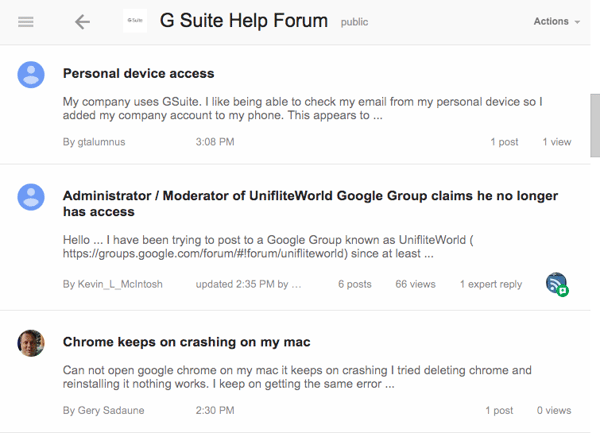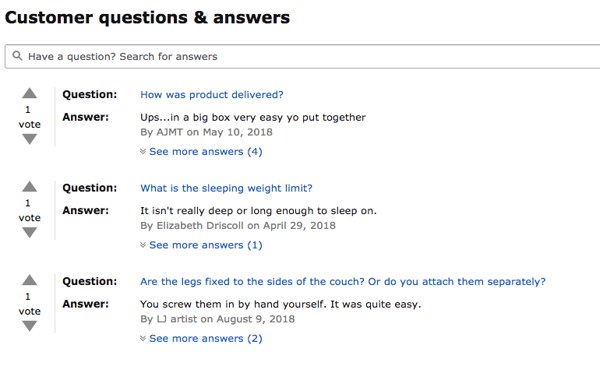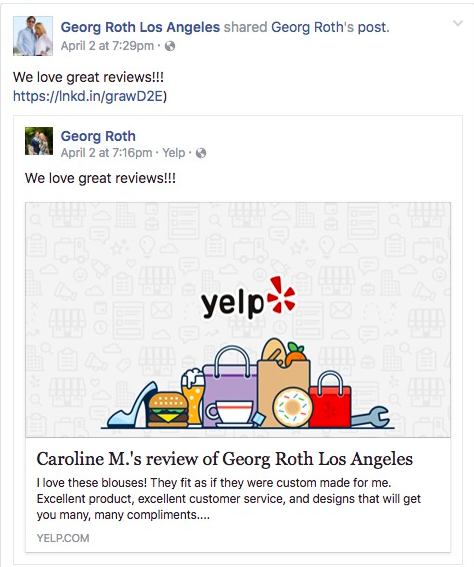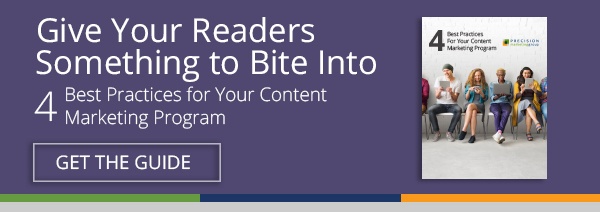When you think of user-generated content (UGC)—that is, content that has been created and released into the world by “real-life” contributors—what comes to mind?
You may be thinking about the Cup Art Challenges from Starbucks, which racked up tens of thousands of Instagram and Twitter followers. Or Dove’s #BeautyStory social campaign that drove 1.5 million visitors to the company’s website. Or perhaps GoPro’s YouTube contest, where homemade footage of adrenaline-fueled stunts poured in by the millions.
Well, we get it. The big-brand B2C examples are impressive – I mean, that media attention is enough to make any marketer swoon.
But what if you’re a small business with a product or service that is particularly... unsexy? Or what if your audience isn’t characterized by social-savvy Millennials? Is there still a place for UGC? The answer is YES. In fact, UGC can be incredibly powerful for any business – and you don’t need to be a social media rockstar or a nationally known retailer to leverage its power.
Why Is UGC So Effective?
In a word, trust. Your prospects are far more likely to be swayed by endorsements from their peer community than even the slickest-of-slick traditional marketing. Some compelling statistics from Nielsen:
- 92% of consumers trust peer recommendations above all other forms of advertising.
- UGC is 20% more influential when it comes to purchase decisions AND 35% more memorable than other types of media.
- Word-of-mouth programs can amplify the impact of paid media by 15%.
So what does all that mean for small or mid-size B2B companies fighting for attention online? Here we’ll explore some ideas that will help you tap into the power and potency of user-generated content on your very own website, for very little cost.
1. Lean On Your Employees
Prospects visiting your site don’t know you yet. And during their search, company culture is a great way to differentiate your business from your competitors. So why not rely on your team for authentic content? It’s a great way to show visitors something memorable and distinct versus the same stale stock photos they see everywhere else.
Start with a small, creative prompt (a pet photo contest or Employee New Year’s Resolutions, etc.) that spurs employees to capture “real” moments. Those moments can become the building blocks of your brand identity. Here’s what happened when we asked the team at Precision Marketing Group to share “a day in the life” in a remote agency culture. (Watch and let us know if it’s more memorable than a block of text on an About Us page.)
2. Create User-Generated FAQs
A study by Forrester discovered that as many as 72% of customers prefer to use self-help options rather than reach out to a company directly. Remember, B2B customers tend to be self-researchers who are empowered to make purchase decisions by finding the answers to their own questions. And chances are, they’ll spend time looking for those answers on your website long before they jump into your contact database. It’s the perfect time to ratchet up the trust factor with UGC!
One way is to have real users provide answers to the questions on your FAQ page, a concept similar to the one deployed below by Google G Suite.

For products, a “Customer Question & Answer” section (like the next example from Amazon) is a great way to diminish the doubts among visiting prospects. This tactic can be especially effective for marketing to an audience that is super-niche or highly technical in nature.

3. Use Video Testimonials from Customers
Got happy customers? Of course you do. And they can make a huge impact on like-minded prospects who are seeking your product or service.
Video testimonials are one of the best ways for B2B companies to employ UGC content. Simply identify customers in the “Delight” phase of the Buyer's Journey and ask them to grab their iPhone and share their thoughts about your business on camera. Some might be camera shy, but others will welcome the spotlight!
You can help them along, too: prepare talking points in advance, and if they are filming themselves, offer some quick recording tips (i.e., film horizontally, choose good lighting, use a microphone, etc.) to make the task easier. Remind them that in return, they’ll get some good PR for their business, as shown in the example below.
4. Promote Third-Party Reviews
Are customers writing reviews about your business on third-party sites such as Yelp, Capterra, Angie’s List, Fit Small Business, and Glassdoor? Find out by setting up a Google Alert to see what people are saying about you. Then capture and re-promote your best reviews on your website. According to research conducted by GetApp, nearly 68% of B2B companies find third-party review sites are an effective way to generate leads.
You can always take it a step further by cross-promoting third-party reviews across your social channels, as shown in the Instagram example below. Just always be mindful of user permissions, and if re-posting from a third-party review site, pay attention to the reviewing company’s policies on trademarks, logo and other copyrighted materials.

5. Employ Guest Bloggers
Are there influencers and thought leaders in your industry that you can call on to generate content for your website? Employing guest bloggers is the perfect way to borrow expertise on the topics that you know will resonate with your readers. You can then “give back” to those bloggers by promoting their company in return. Check out our related blog, How to Find Bloggers in Your Industry – And Interact With Them! for a better idea of how to tackle this.
Remember, by creating marketing opportunities that build trust from peers, you can turn your searching prospects into qualified leads, all on a minimal marketing budget. So go ahead and give it a try – you’ve got little to lose and lot to gain! And if you need help getting your marketing off the ground, feel free to connect with us at any time.














